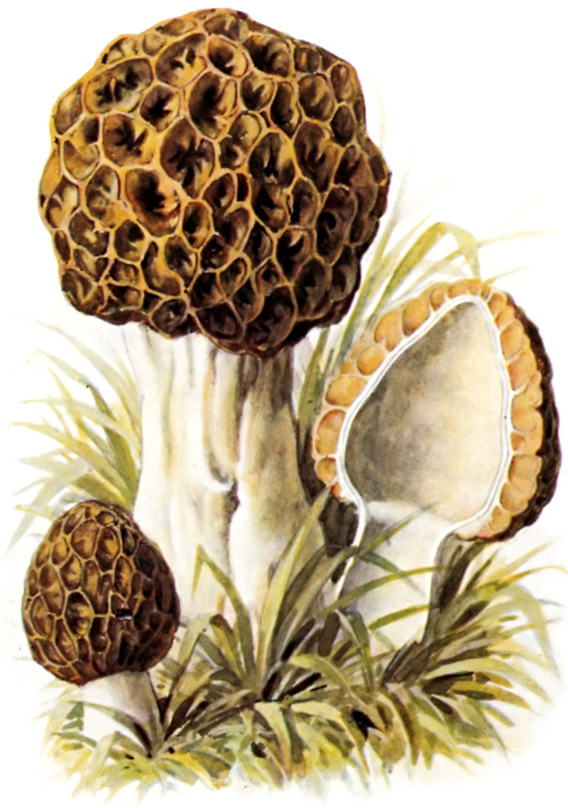My apologies for the prolonged absence, I was busier than usual and am travelling to do some more experimental cooking this weekend. Today, all I have is a recipe from the Mondseer Kochbuch to take us a little closer to the (probably illusory) medieval chicken nugget:

20 How to prepare a good fried muos
Take (meat) of the breast of a chicken and chop it small, and pound it in a mortar. Add a little flour or bread, pepper and ginger. Salt it in measure, according to the quantity. Stir this well together Cut to small wooden pieces (klupplein) the length of a finger, (shaped) like a spear shaft (eln schafft – probably read “rounded like a spear shaft”). Shape smooth ‘beaks’ (snebel) in your hands and mould them around the shaft (spis) like a morel. Pull them on the outside so they become uneven (kraus). Lay them in a pan and let them boil with the sticks (stecklen). As you take out one, put in another, and prepare as many as you wish. When they are done, take them out. Stir a chopped muos with butter and fill the morels with it. Stick them on a skewer for a while. Heat them and drizzle them with butter and serve them. You can also prepare morels of pike or of salmon or whatever you wish this way.
This is another illustration of how it is never safe to rely on the titles of German recipes. This is not really a muos except in the sense that it is mashed. It is a close relative of the faux morel recipe made with egg batter we find in Cod Pal Germ 551 and Meister Eberhard. All those recipes try to replicate the stuffed heads of morel mushrooms, also a commonly found recipe for example in Cod Pal Germ 551 and the Munich Cgm 384 collection. It looks like an interesting, if fiddly thing to do. This specific recipe again has a parallel in the Buoch von guoter Spise (#23) though this is simply titled “a good dish”. As is often the case in the Mondseer Kochbuch, it is with reference to this we can figure out what is going on here.
The Mondseer Kochbuch is a recipe collection bound with a set of manuscript texts on grammar, dietetics, wine, and theology. There is a note inside that part of the book was completed in 1439 and, in a different place, that it was gifted to the abbot of the monastery at Mondsee (Austria). It is not certain whether the manuscript already included the recipes at that point, but it is likely. The entire codex was bound in leather in the second half of the fifteenth century, so at this point the recipe collection must have been part of it. The book was held at the monastery until it passed into the Vienna court library, now the national library of Austria, where it is now Cod 4995.
The collection shows clear parallels with the Buoch von guoter Spise. Many of its recipes are complex and call for expensive ingredients, and some give unusually precise quantities and measurements. It is edited in Doris Aichholzer’s “Wildu machen ayn guet essen…” Drei mittelhochdeutsche Kochbücher: Edition, Übersetzung, Quellenkommentar, Peter Lang, Berne et al. 1999
